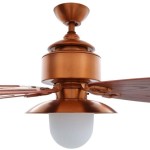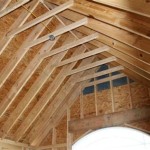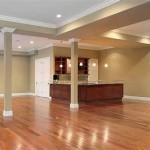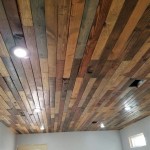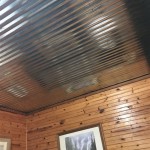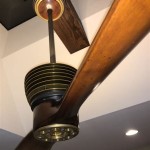Best Low Profile Flush Mount Ceiling Fans: A Comprehensive Guide
Low profile, or flush mount, ceiling fans are designed for rooms with low ceilings, where standard ceiling fans might hang too low and present a safety hazard or visual obstruction. These fans are mounted directly to the ceiling, minimizing the distance between the fan blades and the ceiling surface. Selecting the best low profile flush mount ceiling fan involves considering several factors, including room size, aesthetics, features, and energy efficiency.
This article provides a comprehensive guide to understanding and choosing the optimal low profile flush mount ceiling fan for various needs and preferences. It explores the key characteristics of these fans, the criteria for selecting the best model, and offers insights into the benefits they provide in different living spaces.
Understanding the Need for Low Profile Ceiling Fans
Traditional ceiling fans typically hang from a downrod, which is a metal pipe that extends from the ceiling to the fan motor. This design is suitable for rooms with standard or high ceilings. However, in rooms with low ceilings, typically 8 feet or less, a standard ceiling fan can create a feeling of claustrophobia and may even pose a risk of someone hitting the fan blades. Low profile ceiling fans eliminate the downrod, mounting the fan motor directly to the ceiling bracket. This design minimizes the overall height of the fan, making it ideal for rooms with limited vertical space.
Furthermore, low profile fans are not exclusively reserved for low ceilings. Some individuals prefer their streamlined appearance even in rooms with standard ceiling height. The flush mount design offers a clean, minimalist aesthetic that complements modern interior design styles. This versatility makes them an attractive option for a wide range of homes and preferences.
Selecting a low profile fan can also contribute to improved airflow in the room. While some may assume that their proximity to the ceiling limits their effectiveness, many modern low profile fans are engineered with blade designs and motor technologies that optimize air circulation. Choosing the right blade pitch and motor power is crucial for ensuring adequate airflow throughout the room, regardless of the ceiling height.
Key Factors to Consider When Choosing a Low Profile Ceiling Fan
Selecting the right low profile ceiling fan requires careful consideration of several factors. These include room size, airflow requirements, aesthetic preferences, motor type, blade design, lighting options, and smart features.
Room Size and Fan Size
The size of the room is a primary determinant of the appropriate fan size. A fan that is too small will not adequately circulate air throughout the room, while a fan that is too large may create excessive and uncomfortable drafts. As a general guideline, the following recommendations can be used:
- Rooms up to 75 square feet: A fan with a blade span of 36 inches or less is generally sufficient.
- Rooms between 75 and 150 square feet: A fan with a blade span of 42 to 48 inches is typically recommended.
- Rooms between 150 and 300 square feet: A fan with a blade span of 52 to 56 inches is usually appropriate.
- Rooms larger than 300 square feet: A fan with a blade span of 60 inches or more may be necessary, or multiple fans may be considered.
These are guidelines, and the specific requirements may vary depending on the room's shape, ceiling height, and other factors. It's essential to measure the room accurately and consider the overall airflow goals when selecting the appropriate fan size.
Airflow (CFM)
Airflow is measured in cubic feet per minute (CFM) and indicates the volume of air that the fan can move. A higher CFM rating signifies better airflow. The required CFM depends on the room size and the desired level of cooling. For rooms with significant heat buildup, such as kitchens or sunrooms, a fan with a higher CFM rating is generally preferable.
Look for Energy Star certified fans, as these models are tested and rated for their airflow efficiency. These fans provide optimal airflow while consuming less energy, resulting in lower electricity bills. Checking the CFM rating and energy efficiency is essential to maximize the fan's performance and minimize its environmental impact.
Motor Type
The motor is the heart of the ceiling fan, and its quality directly impacts the fan's performance, noise level, and lifespan. There are two primary types of ceiling fan motors: AC (alternating current) and DC (direct current).
- AC Motors: These are the traditional type of ceiling fan motors. They are generally more affordable but tend to be less energy-efficient and noisier than DC motors.
- DC Motors: DC motors are more energy-efficient, quieter, and offer more speed settings than AC motors. While they typically have a higher initial cost, they can save money in the long run due to their lower energy consumption.
When selecting a low profile ceiling fan, consider the motor type based on budget and performance priorities. If energy efficiency and quiet operation are essential, a DC motor fan is the better choice. If budget is the primary concern, an AC motor fan may be sufficient, but it's important to be aware of its limitations.
Blade Design and Material
The design and material of the fan blades influence both the fan's aesthetic appeal and its airflow efficiency. Blades are available in various materials, including wood, metal, plastic, and composite materials.
- Wood Blades: Wood blades offer a classic and elegant look. They are often used in traditional and rustic interiors.
- Metal Blades: Metal blades provide a sleek and modern appearance. They are typically more durable than wood blades and are well-suited for contemporary spaces.
- Plastic Blades: Plastic blades are a cost-effective option. They are lightweight and easy to clean, making them a practical choice for everyday use.
- Composite Blades: Composite blades combine the benefits of different materials. They are often durable, weather-resistant, and available in a variety of styles.
The blade pitch, or the angle of the blades, also affects airflow. Blades with a steeper pitch generally move more air, but they may also consume more energy. Selecting the correct blade pitch ensures optimal airflow without compromising energy efficiency.
Lighting Options
Many low profile ceiling fans come with integrated lighting options. These can include LED lights, incandescent bulbs, or halogen lamps. LED lights are the most energy-efficient option, providing bright illumination while consuming minimal power. The type and intensity of the light should be considered based on the room's lighting requirements.
Some fans offer dimming capabilities, allowing adjustment of the light level to create the desired ambiance. Others feature color temperature control, enabling selection of warm, neutral, or cool light. These features provide greater flexibility and customization to suit different moods and activities.
Smart Features
Modern low profile ceiling fans may incorporate smart features, such as Wi-Fi connectivity, smartphone control, and voice assistant integration. These features allow remote control of the fan's speed, lighting, and other functions.
Smart fans can be integrated with smart home systems, enabling automation and scheduling. For example, the fan can be programmed to turn on automatically when the room temperature reaches a certain level or to turn off at a specific time of day. These smart features provide convenience and energy savings, enhancing the overall user experience.
Benefits of Low Profile Flush Mount Ceiling Fans
Low profile flush mount ceiling fans offer several benefits, making them a valuable addition to various living spaces. These benefits include space saving, aesthetic appeal, energy efficiency, improved airflow, and enhanced comfort.
Space Saving
The primary benefit of low profile ceiling fans is their space-saving design. By eliminating the downrod, these fans minimize the distance between the fan blades and the ceiling, making them ideal for rooms with low ceilings. This allows for comfortable and safe use of a ceiling fan in spaces where a standard fan would not be suitable.
Aesthetic Appeal
Low profile ceiling fans offer a clean and minimalist aesthetic that complements modern interior design styles. Their streamlined design blends seamlessly with the ceiling, creating a cohesive and uncluttered look. This makes them an attractive option for those who prefer a subtle and understated appearance.
Energy Efficiency
Many low profile ceiling fans are designed with energy-efficient motors and LED lighting, resulting in lower energy consumption and reduced electricity bills. Energy Star certified models are specifically designed to provide optimal airflow while using minimal power. This makes them an environmentally friendly and cost-effective choice.
Improved Airflow
Despite their proximity to the ceiling, modern low profile ceiling fans are engineered to provide adequate airflow. Their blade designs and motor technologies are optimized to circulate air effectively throughout the room. This helps to keep the room cool in the summer and warm in the winter, reducing the need for air conditioning and heating.
Enhanced Comfort
By circulating air, low profile ceiling fans can create a more comfortable living environment. They help to distribute air evenly throughout the room, eliminating hot and cold spots. This creates a more consistent and comfortable temperature, improving overall well-being.
In conclusion, selecting the best low profile flush mount ceiling fan requires careful consideration of various factors, including room size, airflow requirements, motor type, blade design, lighting options, and smart features. By understanding these factors and weighing the benefits, individuals can choose a fan that meets their specific needs and preferences. Low profile ceiling fans offer a space-saving, aesthetically pleasing, and energy-efficient solution for improving airflow and comfort in various living spaces.

Antoine 20 In Black Low Profile Flush Mount Led With Remote And App Smart Control Indoor Ceiling Fan Dimmable Lighting Hd Fsd 14 The Home Depot

Low Profile Fans Hugger Delmarfans Com

Oaks Aura 20in Led Indoor Black Bladeless Low Profile Ceiling Fan Flush Mount Smart App Remote Control Dimmable Lighting Dc2002 The Home Depot

Bestcosty 52 Low Profile Flush Mount Ceiling Fan Without Lights Com

Low Profile Outdoor Ceiling Fans Flush At Lumens

Hugger Ceiling Fans Sleek Solutions For Low Spaces Delmarfans Com

Antoine 20 In Black Low Profile Flush Mount Led With Remote And App Smart Control Indoor Ceiling Fan Dimmable Lighting Hd Fsd 14 The Home Depot

Low Profile Fans Hugger Delmarfans Com

Antoine 20 In Led Indoor Black Low Profile Ceiling Fan With Dimmable Lighting Small Flush Mount Remote Hd Il 01 The Home Depot

Sdjma 19 7 Modern Ceiling Fans With Light 30w Led Dimmable Remote Invisible Blades Semi Flush Mount Fan 3 Sd Indoor Low Profile For Home Bedroom Kitchen Com
Related Posts

